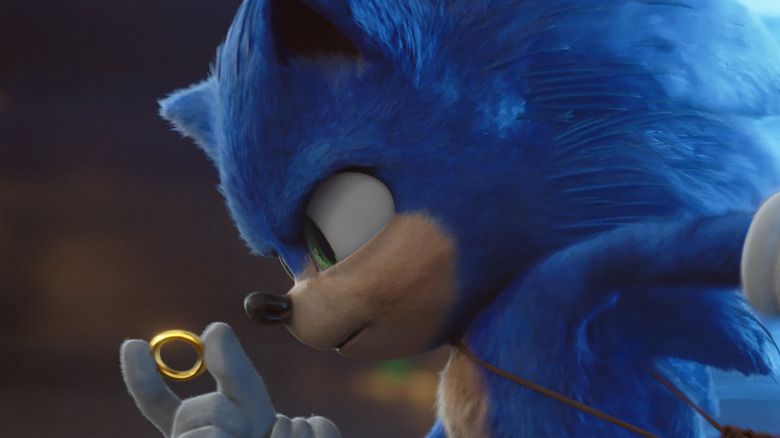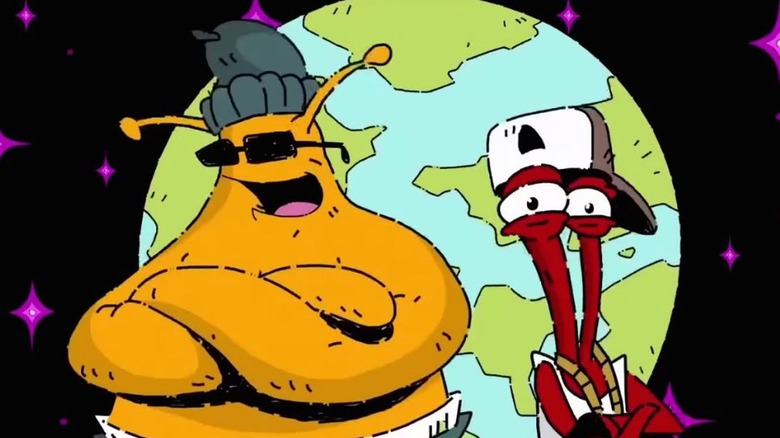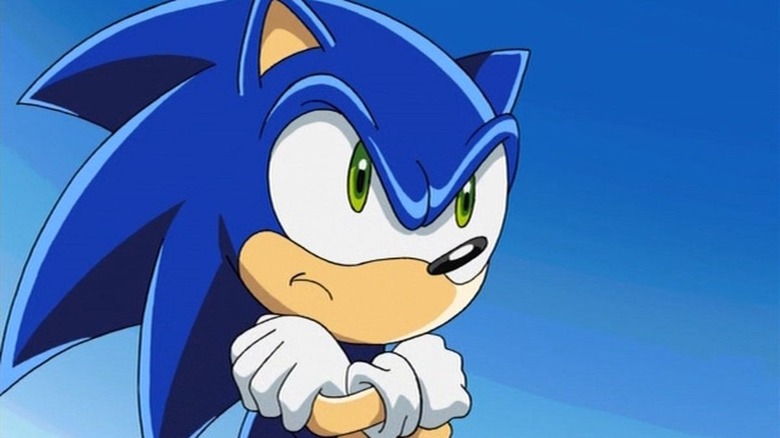Sonic The Hedgehog Wasn't Sega's First Stab At A Mascot
As one of the most iconic developers and publishers in the video game industry, Sega's image has largely become synonymous with perhaps its most successful export — Sonic the Hedgehog. The anthropomorphic blue hedgehog became a gaming legend upon his first marquee appearance in 1991's "Sonic the Hedgehog" for the Sega Genesis, a game that became so successful that it spawned a bona fide media franchise that has recently been the subject of two successful feature films. Without a doubt, Sonic the Hedgehog — and his gold rings — remains a huge part of Sega's identity and serves as virtually a de facto mascot for the Japanese entertainment company.
But what you may not know is that Sonic wasn't initially intended to be Sega's mascot. As the company was looking to improve its branding and develop a recognizable character akin to Nintendo's Super Mario, Sega and its marketing team had gone through a rigorous process to determine which of its collection of virtual characters would serve as a visual shorthand for its brand. Of course, these prior attempts all fell away as Sonic ultimately became a huge part of Sega's virtual identity. Originally, it was actually a duo of characters that Sega attempted to push into the spotlight.
ToeJam and Earl were initially intended to be Sega's mascots
A profile by Sam Pettis of Red Bull Gaming in 2016 documented the complete process of how Sega attempted to devise its own mascot to compete with the rival Nintendo's Mario on a global scale. By 1990, the two companies were embroiled in what could only be described as a marketing war as the two Japanese companies looked to extend the two's massive influence on the industry to the Western world. In turn, the process of devising an instantly recognizable character that would be the antithesis of how Mario began. One of the earliest candidates for Sega's global marketing ambitions was ToeJam and Earl, a duo of characters pitched by American programmer Mark Voorsanger.
Depicted as aliens with an odd affinity for hip-hop, Sega saw ToeJam and Earl as potentially appealing to Western audiences. Sega president Hayao Nakayama liked the concept, but ultimately decided against it out of fear of the characters being "too American" to be the visual doppelgangers of the Japanese company. Despite not quite making the cut as Sega's primary source of branding, Sega did greenlight a game based on the duo, "ToeJam and Earl," for the Sega Genesis in 1991. The product was well received and has retroactively been viewed as an early precursor to the modern roguelike genre.
Sega eventually struck gold with Sonic
One of Sega's earliest attempts at creating a mascot centered around "a rabbit-like being with long, extendable ears that could pick up and throw objects at his enemies" according to Red Bull's retrospective. Due to difficulties with translating this concept into a video game, the idea was initially abandoned by Sega's creative team. The conceptual art for this idea would later be reevaluated by Sega programmer Yuji Naka in the future. Naka saw potential in the idea and proposed that what the character needed was speed and the ability to roll in order to create a more engaging player experience, a concept he had originally devised some years prior. The character's rabbit-like appearance would later be altered to that of a hedgehog. "Hedgehogs can roll themselves into a ball, so we decided to go from a rabbit to a hedgehog," Naka told Sega Visions in a 1992 interview (via Red Bull).
To keep in lockstep with Sega's global image and branding, Sonic (as he came to be known) was made to be blue. Naka would later apply the "Sonic" name to the character after hearing a quip from a fellow staffer about his signature supersonic speed. Naka would continue adding small nuances to Sonic's appearance, such as his signature red sneakers before the idea finally culminated into the character we all love today.
Sonic became a hit, Sega got their Mario-rivaling mascot, and the rest is history.



